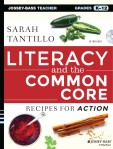 [This post, written with Jamison Fort, originally appeared in slightly different form on MiddleWeb on March 15, 2016.]
[This post, written with Jamison Fort, originally appeared in slightly different form on MiddleWeb on March 15, 2016.]
In Part I of this mini-series, we looked at how to help students rule out ineffective evidence when they are attempting to build arguments. The flip side of this work is to help them find the best evidence.
To give students more practice in finding relevant evidence on their own and explaining it, my friend Jamison Fort, who teaches 6th and 7th grade history, created the following organizer for students to analyze one text[1] that has multiple claims (Note: We use “claim” and “argument” interchangeably):
Directions: Find a quote that BEST supports the claim presented and clearly explain how/why your quote BEST supports the claim.
| The claims | Find quotes from the text to support the claims. | Clearly explain how/why your quote supports the claim. |
| Sample:
“Habeas Corpus” is going to be the basis for future animal freedom cases.
|
Quote: “Sandra’s case will likely energize other legal efforts for other animals—in particular, 17 chimpanzees in zoos throughout Argentina. ‘Considering that they are very close to human primates, it is an absurdity that they are still in captivity in prison.’” | Explanation: This quote supports the claim because it points out that this case will encourage other cases with similar circumstances. Also, it is already offering an example with chimpanzees, using language like “primates… in prison.” |
| Claim 1:
Sandra’s case was likely to succeed because orangutans are similar to humans. |
Quote: | Explanation: |
| Claim 2:
Zoos are basically jails that hold prisoners that have done no crime. |
Quote: | Explanation: |
| Claim 3:
Clearly, Argentinian courts are more receptive to non-human rights than the United States courts are. |
Quote: | Explanation: |
***
The day after this exercise, Jamison explained that the ultimate goal was to make sure that by the end of the next three days, every student would be able to evaluate evidence and choose the strongest possible evidence to support a claim. Then he launched the following lesson:
| Do Now: “Explain your mental process of elimination when deciding which is the best possible evidence to support a claim or answer to a question.” |
Students pair-shared, then responded to cold-calling. Their answers—that the evidence must be relevant or related to the claim, or must prove a point—showed that they evaluated evidence with single isolated indicators in mind. They had a partial understanding with responses that outlined segments but missed the full process.
To expand their understanding of how to select effective evidence, Jamison turned to this activity: Students paired up and compared and contrasted the quotes they had chosen, then answered the following questions:
| “Was your partner’s evidence different from your evidence? Ask your partner why they chose what they chose. How do you know you have chosen the best possible evidence for a claim?” |
Once the pairs finished their responses, students shared out and had a discussion around evaluating the quality of evidence. The discussion prompt was:
| “How did we know we had the best evidence with these claims?” |
The class scribe recorded the responses onto a brainstorming poster. Jamison then told his students they were only allowed to keep the four most valuable characteristics of effective evidence. His students then decided what could be eliminated or synthesized and what needed to stay. Once four characteristics were determined, Jamison challenged the class to create an evidence evaluation checklist. Here is what they produced:
Evidence Evaluation Checklist:
|
As there seemed to be general consensus around this checklist, Jamison decided to provoke students’ thinking further: he presented a blatantly faulty piece of evidence as “the best possible choice.”
Students became highly animated in challenging his assertion, asking him to “explain his logic.”
He told them he didn’t need to explain his logic, adding, “I just know I’m right.”
He could see their frustration; they clearly knew he was wrong but couldn’t express how they knew. This was how he pushed them to use the tool they had just created. He wanted to show rather than tell them of its value. After a moment of this student-teacher standoff, he diverted their attention back to the poster they had just created and asked them again, “Is there no one who can tell me why I am wrong?”
And then the connection was made, that “aha” moment. A girl who had taken up the role of class spokesperson said his answer was wrong because it didn’t meet all the necessary checkpoints: “It was related to the text, but not relevant to your claim.”
***
Once you’ve helped students grasp the essential characteristics of effective evidence, they can practice analyzing multiple texts, identifying arguments and key evidence. Here is a tool for that:
| Argument 1: [Either provide it or ask students to identify one.] | Argument 2: [Either provide it or ask students to identify one.] | |
| Text 1 |
[Students insert evidence that supports Argument 1 from Text 1.]
|
[Students insert evidence that supports Argument 2 from Text 1.]
|
| Text 2 |
[Students insert evidence that supports Argument 1 from Text 2.]
|
[Students insert evidence that supports Argument 2 from Text 2.]
|
| Text 3 |
[Students insert evidence that supports Argument 1 from Text 3.]
|
[Students insert evidence that supports Argument 2 from Text 3.]
|
After developing some proficiency in evaluating evidence, students can move on to Argument vs. Evidence Step 3: Given arguments, students must support them with their own relevant evidence and explanation. For more information on that step, click HERE.
[1] “Argentine court’s ruling gives basic human rights to captive ape at zoo,” Newsela https://newsela.com/articles/orangutan-rights/id/6904/

Pingback: Essential Literacy Work Before You Begin Test Prep | The Literacy Cookbook blog